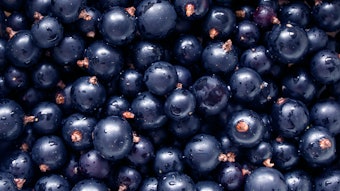The demand for and acceptance of citrus fruit in the daily diet of human beings is based largely on nutritional value, flavor, aroma and other aesthetic charateristics such as color and texture. Citrus fruit is a primary source of our daily requirement of vitamin C, which man cannot synthesize, and additionally, provides, supplementary nutritional value of citrus bioflavonoids as well as amino acids, inorganic salts, and carbohydrates. Despite the worldwide use of grapefruit and other citrus derivatives in foods, drugs, beverages and confections, surprisingly, little has been written about neohesperidin dihydrochalcone (herinafter referred to as NEO-DHC) and its many successful applications as a sweetening agent.
The principal flavonoid ingredient in grapefruit, the all-important flavonoid extractive, naringin, is the key to the successful synthesis and commercialization of NEO-DHC. it is the purpose of this paper to present the similarities and interrelationships between the naturally-occurring dihydrochalcones and neohesperidin dihydrochalcone.










